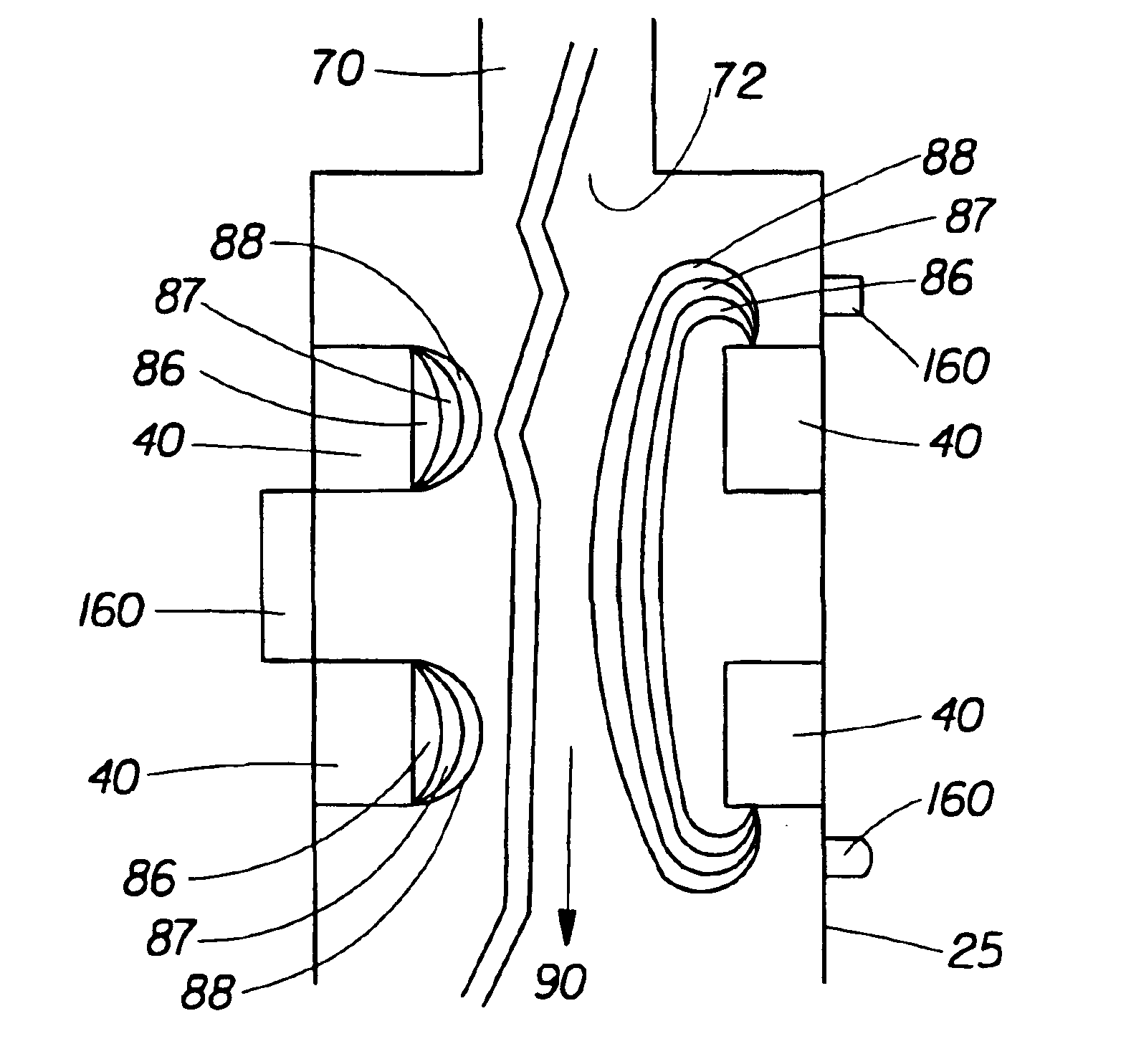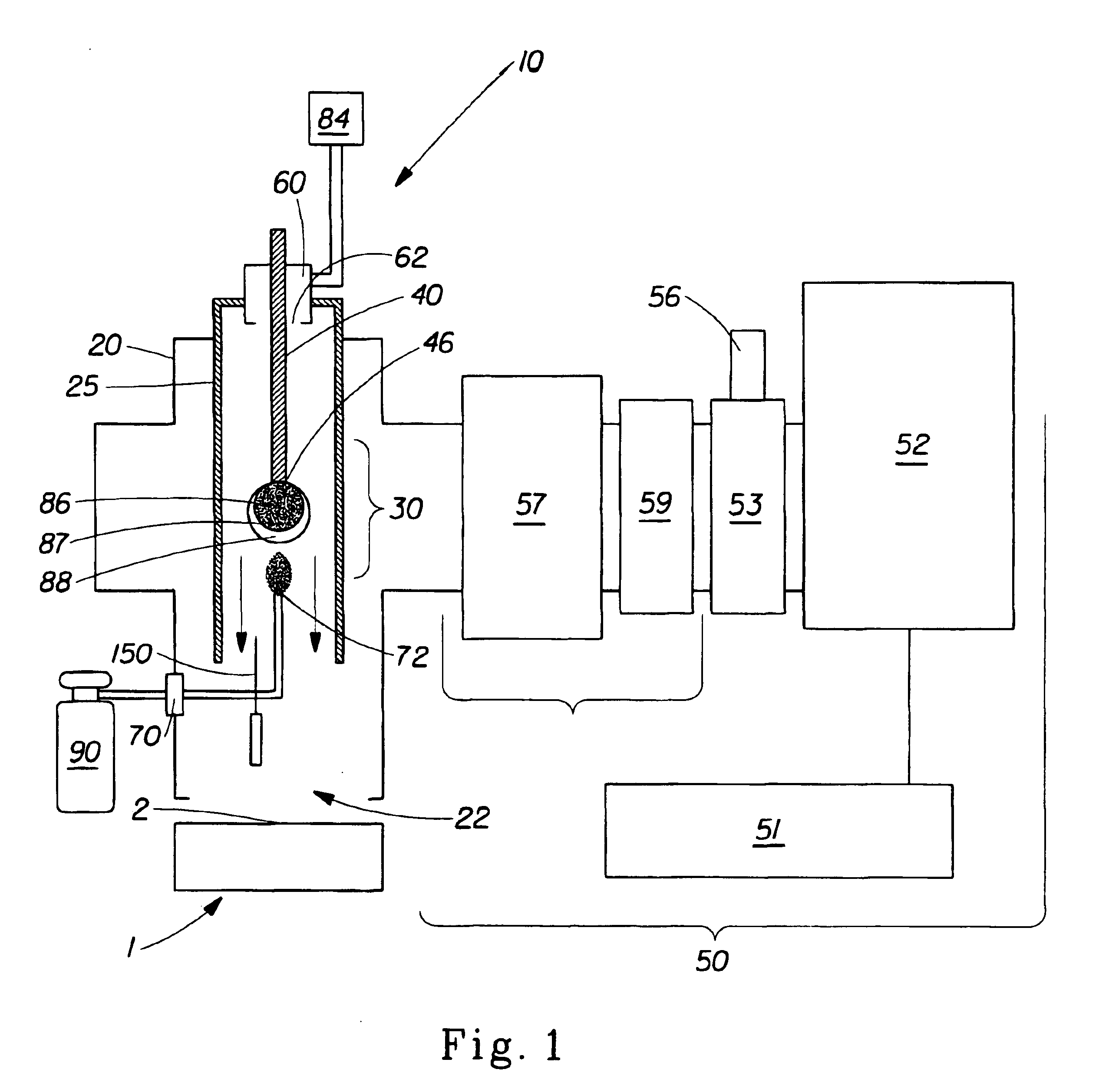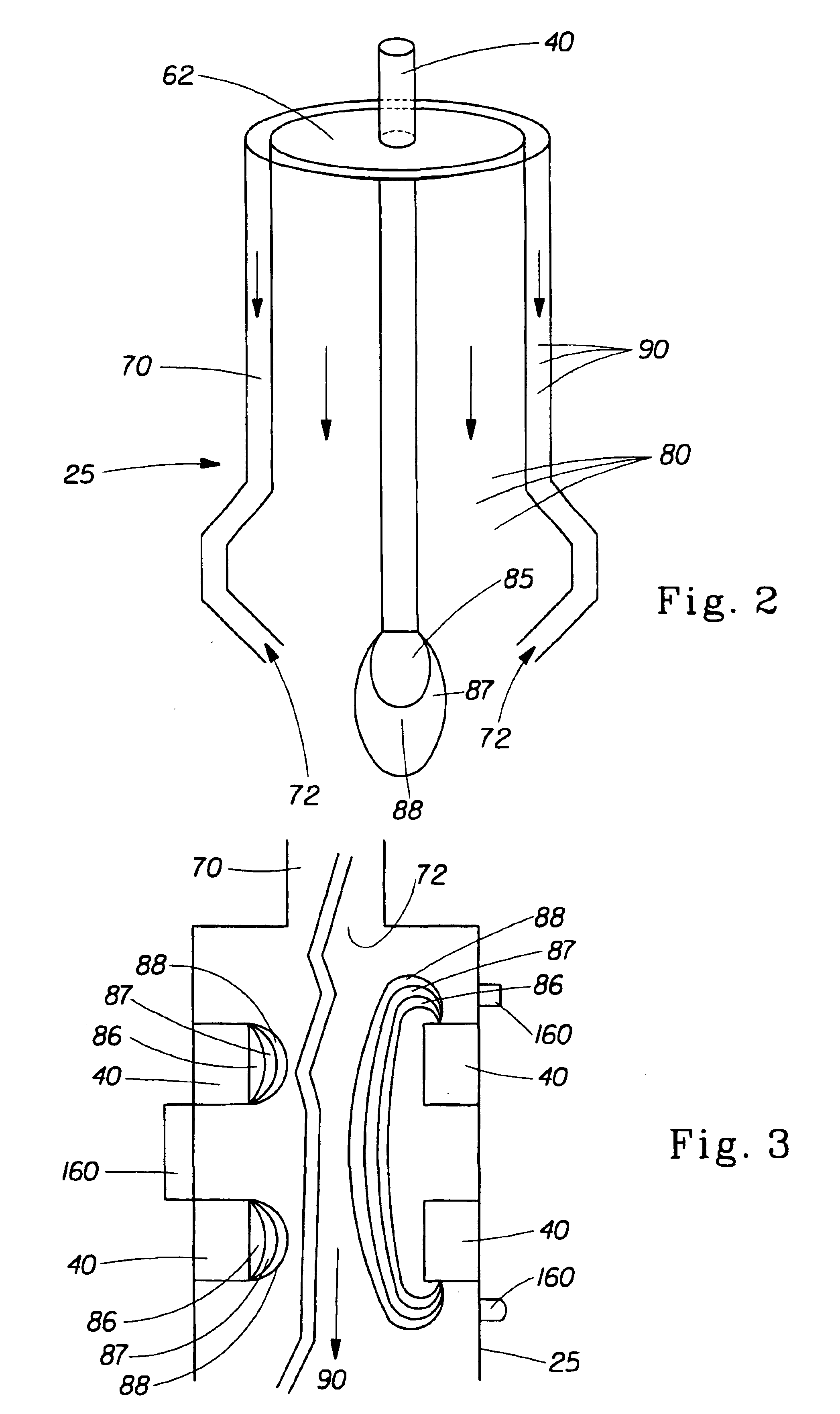Apparatus and method for treating a workpiece using plasma generated from microwave radiation
a technology of plasma and workpiece, which is applied in the direction of plasma technique, chemistry apparatus and processes, coatings, etc., can solve the problems of non-uniform and filamentous corona discharge, relatively slow discharge of materials, and localized arcs
- Summary
- Abstract
- Description
- Claims
- Application Information
AI Technical Summary
Benefits of technology
Problems solved by technology
Method used
Image
Examples
example 1
An apparatus 10 identical to the aforementioned MKS / Astex system was provided. Per the manufacturer's directions, Argon plasma gas, 80, was used at the lowest recommended flow rate (14.2 slm) and 500 Watts microwave forward power. The temperatures of the gas containing excited species exiting the chamber were measured at the distances specified in Table 1. The experiment was repeated substituting Helium for Argon as the plasma gas 80 and, significantly, using a flow rate of 3.02 SLM. The results show a drop in the temperature range from 178-370 C for the manufacturer's conditions, to a temperature range of 56-150 C at the lower flow rate. Thus, when the appatatus 10 is operated according to the prior art, the temperature range is too high to treat many common workpieces, 1, such as cotton fabrics. However, when operated in accordance with the present invention, a temperature range suitable for many common workpieces 1 will advantageously result.
Table 1 shows that suitable plasma tem...
example 2
The apparatus of example 1 was used. The plasma gas 80 was Helium. The working gas 90 was perfluormethylcyclohexane (PFMCH) monomer with a carrier gas Argon. In the control experiment, the working gas 90 was introduced to the plasma through a coaxial hole in the ceramic plasma concentrator 40, such that the working gas 90 entered the plasma at the plasma core 86. In the trial the working gas 90 was introduced in a downstream position indicated in Table 2, such that the working gas was believed to be preferentially exposed to the either the outer plasma zone 88 or to excited plasma gas 80 species further downstream thereof. In each case, a piece of 100% cotton fabric was positioned below the outlet 22 in the position indicated in Table 2, such that the working gas 80 and plasma gas 90 impinged on the fabric surface 1 for treatment of the surface 1.
At the end of each trial, the fabric was analyzed for hydrophobicity by placing a water drop on the fabric. Untreated 100% cotton fabric a...
example 3
In a third experiment, the foregoing apparatus 10 was reused and the setup was adjusted as described below. A fabric sample was placed 16 cm from the distal end 46 of the plasma concentrator 40. The plasma gas 80 was Helium and the working gas 90 was PFMCH. The working gas 90 was used with a carrier gas of Helium. The working gas 90 was introduced 3.5 cm downstream of the distal end 46 of the plasma concentrator 40. The treatment time was held constant at 10 minutes and the microwave power varied. The results, shown in Table 3 below, illustrate that the percentage of Fluorine on the sample surface 1 are directly proportional to the MW input power used, throughout the selected power range.
TABLE 3TrialPower (W)Fluorine (percent)1190 3.4220012.5322019.4423034.4
PUM
| Property | Measurement | Unit |
|---|---|---|
| pressure | aaaaa | aaaaa |
| pressure | aaaaa | aaaaa |
| temperatures | aaaaa | aaaaa |
Abstract
Description
Claims
Application Information
 Login to View More
Login to View More - R&D
- Intellectual Property
- Life Sciences
- Materials
- Tech Scout
- Unparalleled Data Quality
- Higher Quality Content
- 60% Fewer Hallucinations
Browse by: Latest US Patents, China's latest patents, Technical Efficacy Thesaurus, Application Domain, Technology Topic, Popular Technical Reports.
© 2025 PatSnap. All rights reserved.Legal|Privacy policy|Modern Slavery Act Transparency Statement|Sitemap|About US| Contact US: help@patsnap.com



